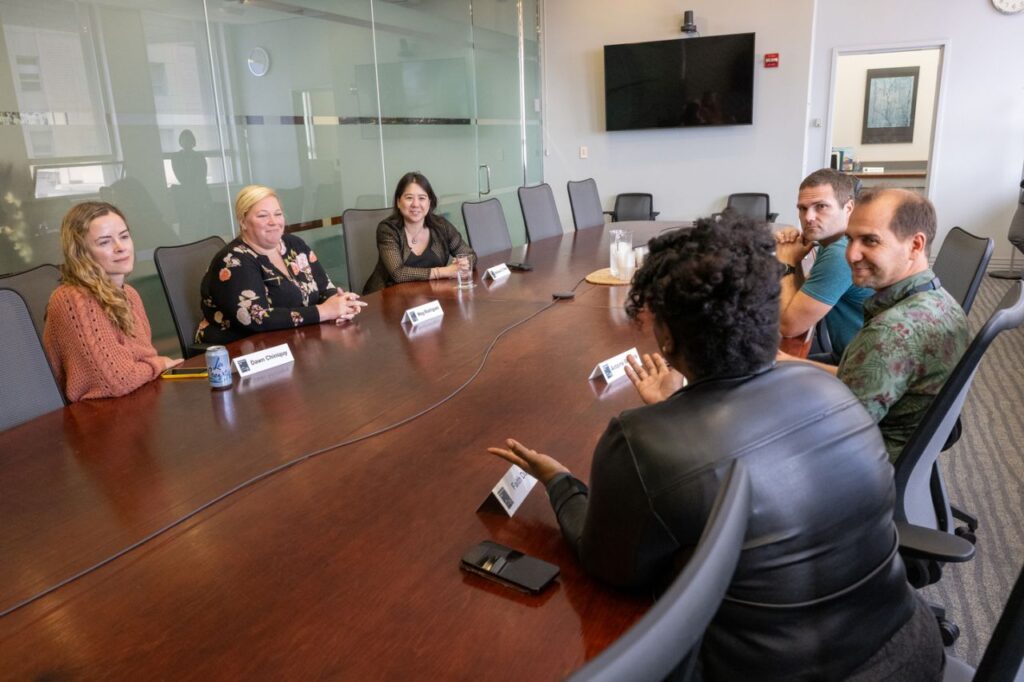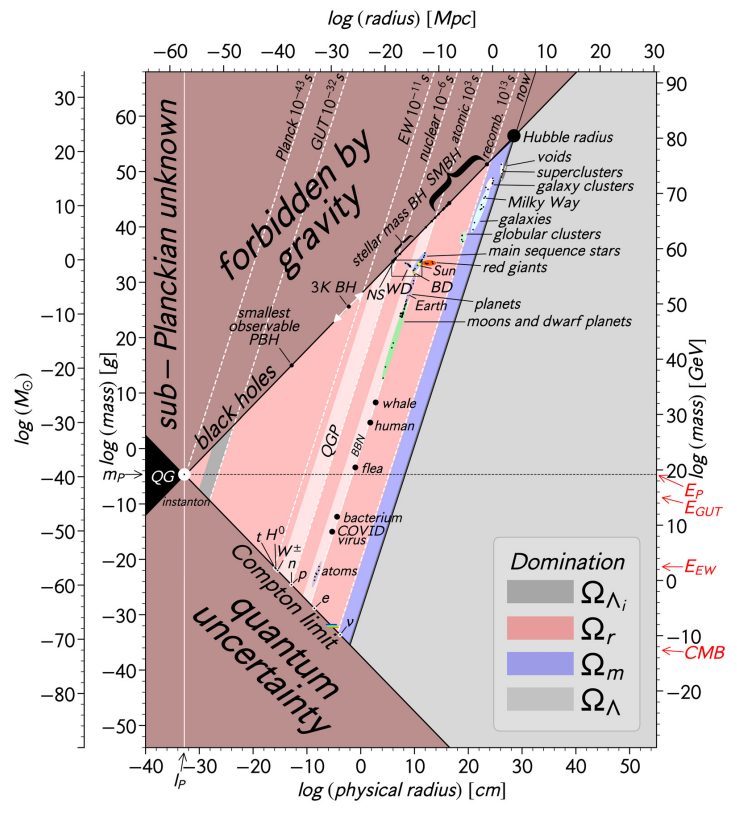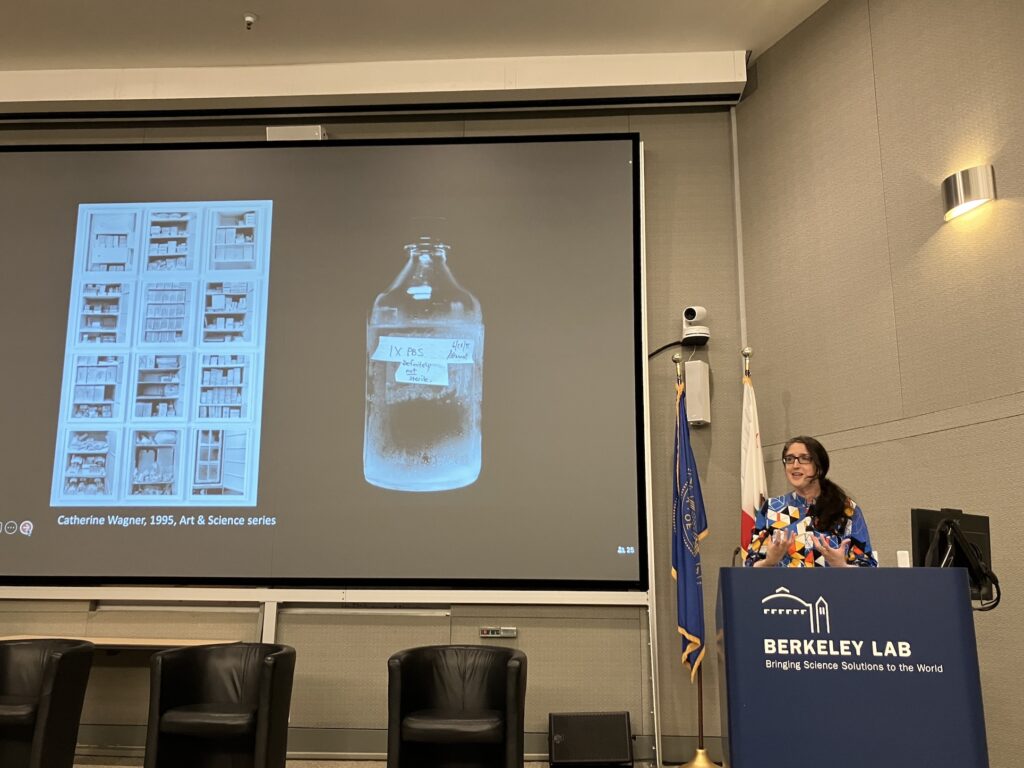Last week I was lucky to meet with Vanessa Chan, the Chief Commercialization Officer for the Department of Energy and Director of the Office of Technology Transitions. She wanted to hear what kind of hurdles when it comes to start a company (hint: a lot.) I told her that a major, overlooked issue is that you generally to be a permanent resident to start at company in the US, whereas two-thirds of postdocs are foreign nationals and on visas. There are ways to get around the requirement (such as Unshackled), but it’s a little sad not more is done to provide support to those willing and able (plus – it is a well-known trope that many US companies are founded by foreign nationals, what I tend to believe is among what sets California apart from other states and other countries, where entrepreneurship doesn’t flourish as much as expected despite many efforts)
Subluminal
Slower than the speed of light, but not by much
Category Archives: science
Resources on writing and presenting
Making a presentation to an audience is important to get your ideas through, and while communication is a basic human trait, communicating effectively requires some thoughts (TED talk speakers go through a thorough training to get their point across.)
Here are a few things learned, for the use of postdocs where one can easily drown everyone else. These are based on my experience, but there are many resources around the web to draw from.
Some practical presentation rules
(These are stretch goals; I rarely follow these rules myself, but they are useful if you don’t know where to start.)
Use 16:9 format (these days most presentations are online, and most screen are wide)Start with an outline.Often, using the title to summarize the main point of the slide is a good use of the title.No text should be smaller than 18pts.Use animations sparingly, to expose your thoughts point by point. Avoid fancy animation or transition between slidesNo more than one slide per minute (if there’s more, you can probably merge a few points) Continue readingTwo ways to say things
I am a native French speaker, and I have always been confused by the ubiquity of English, language which is actually quite difficult to speak (why is tough, though, thought and enough so different?) And I was also puzzled the difference between liberty and freedom – no one could ever explain me the difference, even though “Freedom” is probable the most overused concept in American society (French has “Liberté” in its national motto, but is has nothing to do with “free” as in “free sample.”)
Finally, I found an interesting explanation by Jorge Luis Borges, who sees this as a feature, not a bug:I really enjoy this notion of physicality – onomatopoeia are a vibrant part of the language: whisper, gulp, slam, rumble, slushy, etc.I have done most of my reading in English. I find English a far finer language than Spanish.
Firstly, English is both a Germanic and a Latin language. Those two registers—for any idea you take, you have two words. Those words will not mean exactly the same. For example if I say “regal” that is not exactly the same thing as saying “kingly.” Or if I say “fraternal” that is not the same as saying “brotherly.” Or “dark” and “obscure.” Those words are different. It would make all the difference—speaking for example—the Holy Spirit, it would make all the difference in the world in a poem if I wrote about the Holy Spirit or I wrote the Holy Ghost, since “ghost” is a fine, dark Saxon word, but “spirit” is a light Latin word. Then there is another reason.
The reason is that I think that, of all languages, English is the most physical of all languages. You can, for example, say “He loomed over.” You can’t very well say that in Spanish.
And then you have, in English, you can do almost anything with verbs and prepositions. For example, to “laugh off,” to “dream away.” Those things can’t be said in Spanish. To “live down” something, to “live up to” something—you can’t say those things in Spanish. They can’t be said. Or really in any Roman language.
Whereof one cannot speak, thereof one must be silent.
– Ludwig WittgensteinLet’s all clap for Borges!
In one FEL swoop
“I suppose in about fortnight we shall be told that he has been seen in San Francisco. It is an odd thing, but everyone who disappears is said to be seen at San Francisco. It must be a delightful city, and possess all the attractions of the next world.”
― Oscar Wilde, The Picture of Dorian Gray.
Lately, many of my colleagues have been leaving DOE light sources (Berkeley Lab and SLAC National Lab) to work for startup companies, and it seems that they all try to build better sources (probably based on Free Electron Lasers.)
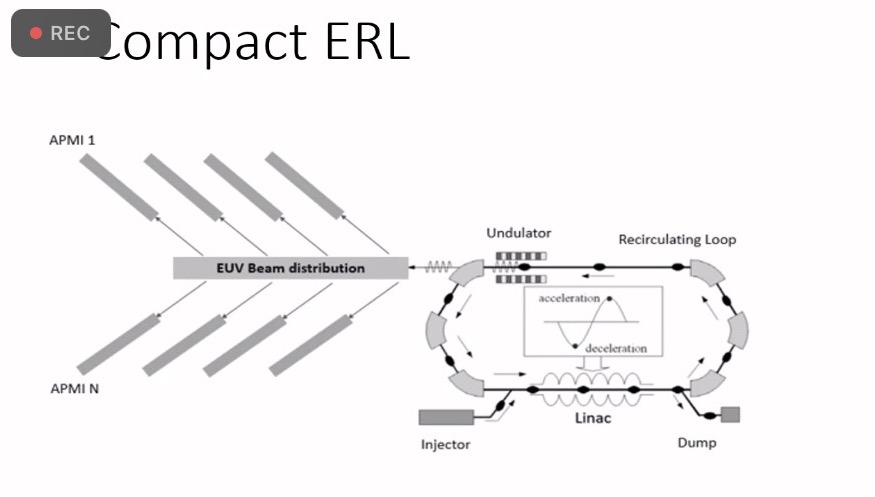 Such companies are Tau Systems, xLight and a third one which seems to be stealth but looks light a giant black hole, given the pool of talent it managed to attract.Good EUV sources have always been a problem, and the current solution using laser pulsed plasma, blasting 40kW of CO2 laser power onto 100um tin beads at khz rates to generate ~200W of EUV is totally crazy, but it works. Still, there must be better ways to do it, and given the unit cost of a EUV litho scanner ($200M), improving the uptime and productivity even by a few percent would be extremely valuable…I’m wishing good luck to my colleagues going his route, this is quite exciting!
Such companies are Tau Systems, xLight and a third one which seems to be stealth but looks light a giant black hole, given the pool of talent it managed to attract.Good EUV sources have always been a problem, and the current solution using laser pulsed plasma, blasting 40kW of CO2 laser power onto 100um tin beads at khz rates to generate ~200W of EUV is totally crazy, but it works. Still, there must be better ways to do it, and given the unit cost of a EUV litho scanner ($200M), improving the uptime and productivity even by a few percent would be extremely valuable…I’m wishing good luck to my colleagues going his route, this is quite exciting!
Seeds
Lately, there’s been quite some interest in LLM, thanks to ChatGPT

Are you looking for a way to generate passive income with ChatGPT? Then look no further than affiliate marketing. By promoting ChatGPT’s products or services to your audience and earning a commission on any sales you refer, you can create a reliable and scalable source of passive income. Whether you have a blog, a podcast, or a social media following, affiliate marketing with ChatGPT is a low-risk, high-reward way to monetize your online presence.
But that’s not all. Another way to generate passive income with ChatGPT is by creating and selling digital products, such as e-books or online courses, related to the topics covered by ChatGPT. By leveraging your expertise and knowledge, you can create a valuable resource for your audience while also generating passive income. And with platforms like Udemy and Teachable, it’s never been easier to create and sell digital products online. So why not take advantage of ChatGPT’s wealth of knowledge and expertise and start generating passive income today?
Plagiarism
One of the big concern du jour is plagiarism. Here’s an interesting piece by Noam Chomsky in the
Noam Chomsky: The False Promise of ChatGPT – New York Times.The human mind is a surprisingly efficient and even elegant system that operates with small amounts of information; it seeks not to infer brute correlations among data points but to create explanations.
And a more elaborate conversation:
Emergence
However, it seems there is a little more at stake. A former classmate of mine who works at Microsoft talked about sparks of Artificial General Intelligence in a podcast – there are emergent properties in AI, meaning that it does not only remix text, but also seem to have an ability to create things merely from structure (short of being able to think.)
AI Frontiers: The Physics of AI with Sébastien Bubeck – AI Frontiers podcast, Microsoft Research
ChatGPT 4.0 can generate code to make a unicorn, even though it has no notion of what a unicorn is, and that code is procedural. (excerpt from Bubeck’s lecture atBerkeley on sparks of AGI)
Physics of AI
The same friend is actually exploring what he dubs the Physics of AI: trying not to understand why AI works, but under what circumstances you can make it work.

Excerpt from Bubeck’s lecture on the Physics of AI
The key insights (nevermind the jab at physicists!) is that there are weird phase transitions at work: depending on how you pick your learning parameters, you can get wildly different results – turning the teaching of the machines into an art itself.(update March 2024: check out this fascinating analysis from Sohl Dickstein on how Neural network training makes beautiful fractals)
Liability
Computers are great, but –

IBM slide from 1979 (from MIT CSAIL)
In the end, humans will be only be there for liability. In a way this is how American society has evolved.
ChatGPT as anonymous expert
Personally, I think that the ability to get answers to question without the fear judgement – asking dumb or intimate questions – will have an incredible impact, perhaps more than the productivity gains that are touted by experts (sure – you can generate reports with AI, then summarize these reports with AI: perhaps the thought should have been boiled down i. the first place.)
“To ask the right question is harder than to answer it.”
–Georg Cantor
There is still some room for human thinking.
SFMOMA x Berkeley Lab: Hybrid forms
Yesterday I invited Tanya Zimbardo from the San Francisco Museum of Modern Art to give a talk at Berkeley Lab (details about the even can be found here: Hybrid Forms: Connecting Art and Science)
It was quite interesting to hear her perspective on a topic which is close to my heart, and happy to hear many references to Rafael Lozano-Hemmer, who currently has the Techs-Mechs exhibition running at the Gray Area, but also quite surprising not hear anything about Jim Campbell (whose art glows atop the Salesforce building “Eye of Sauron”) or the work of Illuminate.
Continue readingHow do you spell croissants
Finding the best croissants in the San Francisco is an essential quest. Here are a few great options:

- Rotha (East Bay) – 1051 San Pablo Ave, Albany, CA
- Arsicault (San Francisco) – 97 Arguello Blvd, San Francisco, CA
- Marvel Cake (South Bay) – 1614 W Campbell Ave, Campbell, CA
I won’t dare to mention pastry shops that bake monstrosities such as Cronuts, Croffle or Croffin (there must beat cosmic justice, Mr. Holmes went down.)
I’ll take a minute to say a word about Bakesum (3249 Grand Ave, Oakland, CA), a French pastry / Asian flavor fusion that started in Berkeley during the pandemic, very close to where I lived and brought me a lot of joy when I needed most.Continue reading
SMART & TGROW
Here are two resources that I found useful for (1) supervising researchers (SMART) and (2) mentoring scientists (TGROW)
SMART
1000 days
Today is the thousandth day since the start of the pandemic, and we still haven’t figured out how to hold efficient meetings online.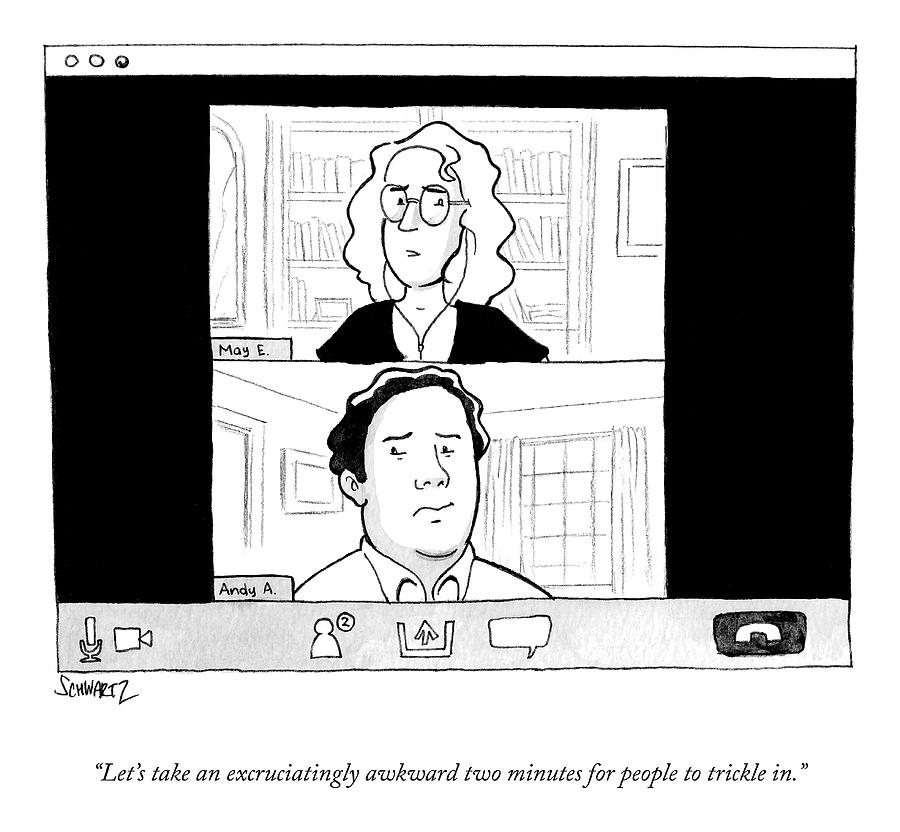 Here’s a useful resource:
Here’s a useful resource:
https://drive.google.com/file/d/14ztjFkkKQGHK-HOtebUOtu-Lpa3DanVt/view Continue reading
Using machine learning to achieve diffraction-limited performance with x-rays deformable mirrors
In a our last paper, we present the use of machine learning to get the most of x-ray adaptive optics – and it works like magic! This was a great work accomplished by Gautam Gunjala, a grad student from UC Berkeley under a SCGSR grant, together with our wonderful colleagues from the Advanced Photon Source.
X-ray adaptive mirrors are very nice, because they allow to correct the shape of x-ray beams, when the beam gets distorted by mirror deformation or misalignment. That’s why we want to use them in the latest generation of synchrotron light source such as ALS-U or APS-U. Continue reading